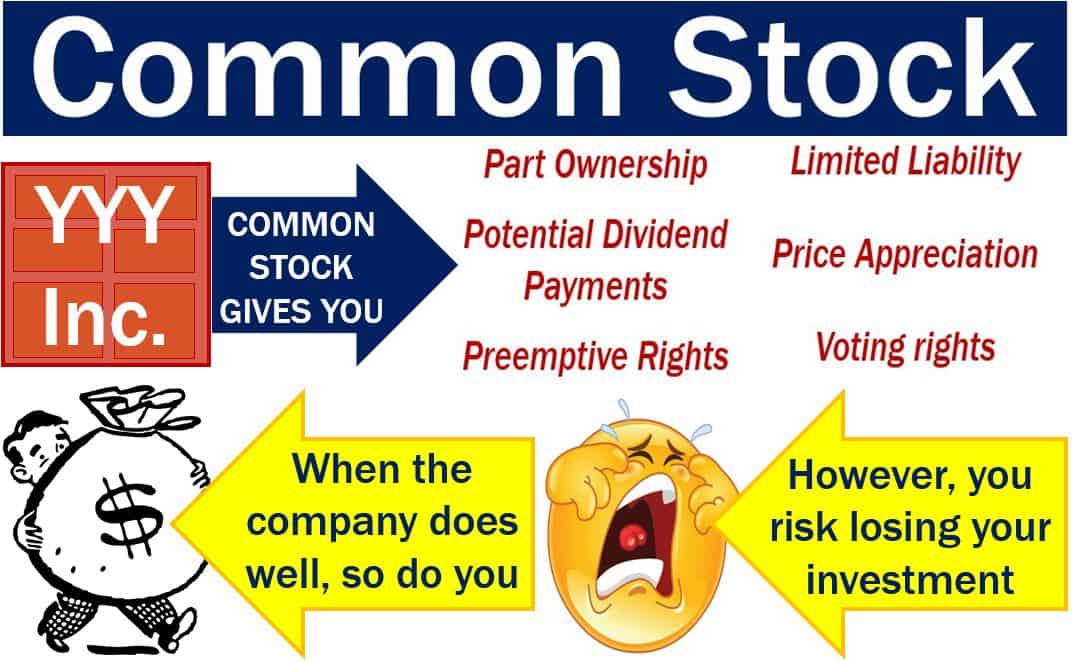
One of the easiest ways to raise funding is through issuing common stock, which comes with both advantages and disadvantages when compared to taking out a traditional loan. Shareholders’ equity is, therefore, essentially the net worth of a corporation. If the company were to liquidate, shareholders’ equity is the amount of money that would theoretically be received by its shareholders. Home equity is roughly comparable to the value contained in homeownership. The amount of equity one has in their residence represents how much of the home they own outright by subtracting from the mortgage debt owed. Equity on a property or home stems from payments made against a mortgage, including a down payment and increases in property value.
How equities are priced
It can tell you a lot about their financial health and how they treat their shareholders. The more shares of common stock you have, the bigger your part of the company. It’s a way for people to invest in a company and possibly make money if the company does well.
Top 20 Best-Performing Stocks: November 2024
11 Financial is a registered investment adviser located in Lufkin, Texas. 11 Financial may only transact business in those states in which it is registered, or qualifies for an exemption or exclusion from registration requirements. As of September 30, 2023 (the date listed on the company’s 2023 annual report), the company had an accumulated deficit of $214 million.
Lower price volatility
In addition, the price of preferred stock is normally less volatile than the price of common stock. Every company has an equity position based on the difference between the value of its assets and its liabilities. A company’s share price is often considered to be a representation of a firm’s equity position. In most cases, retained earnings are the largest component of stockholders’ equity. This is especially true when dealing with companies that have been in business for many years. Factors like company performance, market sentiment, economic conditions, and industry trends influence stock prices.
Voting Rights and Control
Taxes are incredibly complex, so we may not have been able to answer your question in the article. Get $30 off a tax consultation with a licensed CPA or EA, and we’ll be sure to provide you with a robust, bespoke answer workflowmax job and project management software to whatever tax problems you may have. Set your business up for success with our free small business tax calculator. Free up time in your firm all year by contracting monthly bookkeeping tasks to our platform.
Private equity
Both common and preferred stockholders can receive dividends from a company. However, preferred stock dividends are specified in advance based on the share’s par or face value and the dividend rate of the stock. Businesses can choose whether or not and how much to pay in dividends to common stockholders. The other main type of stock is called preferred stock and works a bit differently.
The first-ever common stock was issued in 1602 by the Dutch East India Company and traded on the Amsterdam Stock Exchange. Common stock is primarily a form of ownership in a corporation, representing a claim on part of the company’s assets and earnings. Instead, as a shareholder, you own a residual claim to the company’s profits and assets, which means you are entitled to what’s left after all other obligations are met. A company’s own common stock is equity, and it is neither a fixed asset nor a current asset. If Company A owns Company B’s common stock, the holding would be considered a current asset because the investment can be quickly sold and converted into cash.

It shows how much money was raised from selling shares to investors, often referred to as the common stock balance. This money is used to grow the company, pay for things it needs, or even pay off debts, ultimately benefiting common stockholders. It’s like a health check-up for the company, showing if it’s strong and healthy or if it has some work to do. Understanding common stocks is essential for investors seeking long-term growth.
It includes the basic investment (par value) plus any extra (additional paid-in capital). This section helps everyone see how much of the company’s value comes from its owners’ investments. The balance sheet is a financial statement that shows what a company owns (assets) and owes (liabilities), along with the value of the owners’ part (equity). Common stock is part of the equity section because it represents money that shareholders have put into the company.
- The equity interest of preferred stockholders takes precedence over the interest of common stockholders in the event that the company goes into liquidation.
- Shares of common stock allow investors to share in a company’s success over time, which is why they can make great long-term investments.
- This ownership gives you the right to vote on important company decisions and sometimes get a share of the company’s profits, which are called dividends.
- Yarilet Perez is an experienced multimedia journalist and fact-checker with a Master of Science in Journalism.
- Nevertheless, using “Class B Common Stock” is a common label for a super-voting series of common stock.
A final type of private equity is a Private Investment in a Public Company (PIPE). A PIPE is a private investment firm’s, a mutual fund’s, or another qualified investors’ purchase of stock in a company at a discount to the current market value (CMV) per share to raise capital. When an investment is publicly traded, the market value of equity is readily available by looking at the company’s share price and its market capitalization. For private entities, the market mechanism does not exist, so other valuation forms must be done to estimate value. When you own common stock, your return on investment is tied to the company’s performance. If the company does well, the stock price can rise, allowing you to sell at a profit.
Treasury shares continue to count as issued shares, but they are not considered to be outstanding and are thus not included in dividends or the calculation of earnings per share (EPS). Treasury shares can always be reissued back to stockholders for purchase when companies need to raise more capital. If a company doesn’t wish to hang on to the shares for future financing, it can choose to retire the shares.






